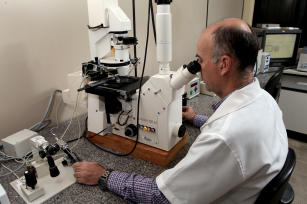In vivo and in vitro embryo production and cryopreservation systems
In vivo and in vitro embryo production and cryopreservation systems

Photo: Brigato, Márcio
The embryo transfer technique (ET) began to be used in Brazil in the 70's, based initially on in vivo embryo production (by conventional superovulation). The potential of the technique as a tool in the multiplication of superior genotypes or in breeding programs resulted in its rapid assimilation by the productive sector, with a consequent increase of its use in the following decades. In recent years, the development of the in vitro embryo production technology has revolutionized the national market for bovine genetics, and the country is now leader and reference in the application of ET. However, in vivo and in vitro embryo production still had important constraints due to the limited knowledge of the reproductive physiology of Zebu breeds, the relative low efficiency of procedures and the difficulty in embryo cryopreservation, which limited the full use of the potential of this tool in different production systems. Likewise, different external effects, such as heat stress and nutrition, were also addressed. The project, in addition to developing and/or adapting technologies in practically every step of the embryo production process, has led to the qualification of a large contingent of technicians, who are now part of Brazilian embryo industry.
Ecosystem: Extreme South, Atlantic Forest, Cerrados Region
Status: Completed Start date: Thu Jan 01 00:00:00 GMT-03:00 2009 Conclusion date: Mon Dec 31 00:00:00 GMT-03:00 2012
Head Unit: Embrapa Dairy Cattle
Project leader: Joao Henrique Moreira Viana
Contact: henrique.viana@embrapa.br
